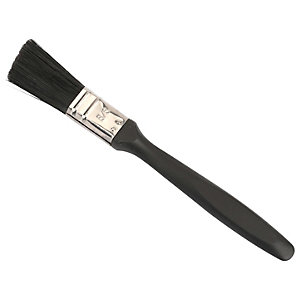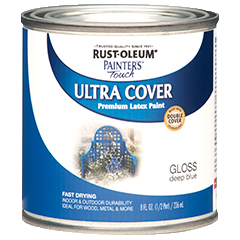The paint on the left was painted with a no-name cheapo paintbrush and the paint on right was painted with one of my favorite brushes. The Best Paint Brushes for a Smooth Finish After trying a lot of paintbrushes, I have found three paintbrushes that I truly love for getting a smooth finish.
Sherwin-Williams paintbrushes are available in widths from 1 to 4 inches. The size you select is up to you, but a good rule of thumb is: 1' to 2' – window and other. It will then be ready for a protective coat of Micro Coat Flat, Satin or Gloss. Micro Sol setting solution is for the most difficult irregular surfaces to be found on models. It completely softens the Microscale Decal, allowing it to drape down onto the surface of the model, conforming perfectly to surface irregularities without distortion. With a few strokes of the paintbrush, your floors can transform into a one-of-a-kind masterpiece. High-Gloss, High-Contrast Painted Floors. The 10 Best Kitchen.
Ever wonder just how to paint a smooth surface without leaving brush marks?
You see all these items in your house that are painted with a brush, such as cabinets, furniture, railings, trim, baseboards, and other woodwork, yet you don’t see brush marks when a professional does it.
What’s their secret?
When you do it, after everything dries, you see a line-up of deep canyons left behind by the brush. They show your every move, each bristle and strand of brush marks going where you went with your brush.
The truth is there’s no magic going on with the pros. They just use the tricks of the trade. Knowledge + technique + a little experience goes a long way to getting your professional painting look.
Covered below, we open up the book on how to avoid brush marks and also see if you can fix brush marks that are already there.
5 Steps to No More Brush Marks
Here’s the best 5 tips to use to get the most professional look out of your brush painting.

1. Fast Isn’t Always Best
When it comes to painting fast, the most important speed we’re talking about is paint drying time. What’s that old saying about something extremely slow and boring– “it’s like watching paint dry!”
The main reason you get paintbrush marks in the first place is because the paint hasn’t flowed out completely before it’s dried.
So, the first tip in avoiding paintbrush lines is to buy slow-drying paint. This is usually higher quality paint that is labeled to take up to 24-hours to dry.
Beware of labels that say “dry to the touch” after a couple hours, or Quick-Dry. While this might be helpful if you’re in a hurry to complete a project, it may not lead you to the best results.
You really do want to remember that phrase from above about watching paint dry. Remember an even better phrase too when it comes to painting: “Slow Makes Paint Flow!”
And flowing paint means a smoother finish.
Best Gloss Paint For Wood
The only word of caution here is to be careful not to bump the paint or handle painted surfaces while they’re drying since you may be used to faster drying times.
2. Go Horizontal
A second trick to help you avoid those unwanted brush marks is to always paint on a horizontal plane if possible.
In other words, take down doors for painting or paint trim before installing. This will allow you to lie them flat and paint on top of them, so paint can flow evenly as it dries.
One of a painters best tools is actually a pair of saw-horses. These also help make painting large or long pieces easy as they can be positioned at just the right level.

This tip really piggy-backs off of the first one above about paint flowing. A nice, flat surface will allow gravity to pull the paint in all directions evenly…like a small pebble dropping in a placid lake.

So what happens when you paint vertically?
When you paint up and down with a brush those vertical brush lines just stay there as nothing allows them to spread out into each other.
You want those ridges from your brush strokes to flatten out, going side-to-side.
3. Go with the Grain
Another tip that you may already know (but need to do!) is to paint with the grain on wood surfaces.
Go in the same direction as the grain so that any brush strokes that do end up showing, will not be as noticeable.
4. Don’t Skimp, Do Two Coats
Next, realize that just about every paint job, done well, will need at least two coats. This is exactly whatgood, professional painters do.
That means, don’t try to lather it on thickly and soak it on in one coat.
Just make sure to cover the surface area with a good amount of paint evenly. Let it dry, and then come back and apply the second coat.
What Brush Is Best For Gloss Paint
5. A Quality Brush Means a Quality Job
Best Paintbrush For Gloss Paint
Finally, always (a big always!), buy a quality paintbrush. You’ll know it’s good because it’ll be a little more expensive than the rest on the shelf.
With proper paintbrush cleaning and care, you’ll have your brush for a long time. Bristles and hairs on these brushes will be of varying lengths and have a “slit-end” look at the ends of them instead of coming to a small point.
Best Paintbrush For Glossing
This “non-uniform” end lets paint clump more there, giving you a smoother application as paint glides on. Think of layered bangs in a good haircut, or carpeting with many fibers of different lengths – that’s what you’re after.
Now, if for any reason you didn’t end up with a really smooth surface and the paint has already dried, you can carefully sand down the fine grooves and ridges left by a brush with a fine, 120-grit type sandpaper.
Best Paintbrush For Water Based Gloss
Go over with a lint-free damp cloth to clean and try painting again keeping the tips above in mind.
What Is The Best Brush To Use For Gloss Paint
There you have it, a few basic how-tos on avoiding paintbrush marks.
